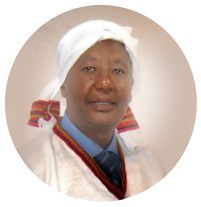
In the article below, Executive Director, Hussein Watta, describes how 'Trees for Life' project, an activity to plant trees through an artful arrangement for aerial and satellite viewing, can also have a long-term positive impact strengthening community knowledge and traditions.
It is hoped in reading Hussein's 'field notes' communities can find their own inspirations to fight climate change.
It is hoped in reading Hussein's 'field notes' communities can find their own inspirations to fight climate change.
